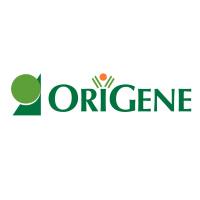【共享】Plasmids for Therapy and Vaccination(希望该电子书对大家有帮助)
丁香园论坛
做了好事——下载了,要留名啊!
http://g.zhubajie.com/urllink.php?id=2594627fbvwb0br3hfv59kf
Preface
Gene therapy and vaccination with nucleic acids is one of the most striking innovations in medical and veterinary sciences. The treatment of a disease on the level of genes rather than on the phenotype level is a promising option to obtain enhanced therapeutics. The pharmaceutical application of genetic material - modified so as to become the so-called active pharmaceutical ingredient (API) - requires developments in biotechnology and pharmacy to obtain systems for the transfer and expression of the API at the right place and time, resulting in the appropriate effects on the organism or cell. The vector for such gene transfer may be as simple as a short piece of DNA. For years now geneticists have been working with plasmids, and the recent developments in vector design and manufacturing point to potent therapeutics and vaccines. In chapters 1 and 2 the background of plasmids is summarized and their structures are presented, since these well-known molecules still have had an unknown potency decades after their discovery. Their different size and structure turned out to be of importance for their function, and the characterization of an API made from DNA required a complete set of quality assurance in manufacturing and quality control. These aspects are explained in chapters 11 and 12. Detailed examples of clinical applications are presented in chapters 4-6 , providing an overview of the wide range of preventive and medical applications using plasmid DNA. In chapters 3 and 5, recent overviews on DNA vaccination are presented which should help to oversee the rapid development and published literature in the application of nucleic acid vaccines. Regulatory and quality assurance aspects of such new drugs are considered in chapter 13. Chapters 7-9 describe modified vector systems based on plasmids, as well as the potency of genomic research and vector design by informatics. The link between genomics and the function of genomic information necessarily requires nucleic acids. One example of veterinary health care is presented in chapter 10. The development of veterinary vaccines still requires some effort and the recent worldwide discussion on BSE in (at least) cattle makes obvious that health care in animals is also health care for humans. However, the treatment of animals grown for food production raise further questions on the aspect of genetically modified food. VI I Preface Plasmid production on an industrial scale is necessarily linked to the question of the expected market size. Chapter 14 guides through the history of gene drug development and the expectations in todays’ and future pharmaceutical markets. The development and preclinical testing of therapeutic or preventive plasmid pharmaceuticals is right at its beginning. The vision of individualized medical treatment might become reality with this type of drug system. The option to have major improvement in comparison to conventional drugs attracts research, industry and politics and is a challenge for all disciplines involved - from genomics to clinical application. Finally, I wish to thank Karin Dembowsky from Wiley-VCH for her continuous collaboration with this project and all authors who contributed to this book, to make it what I hope it will be: A recent overview on the field and a guide through an area of useful innovation.
Martin Schleef
Bielefeld, January 2001








